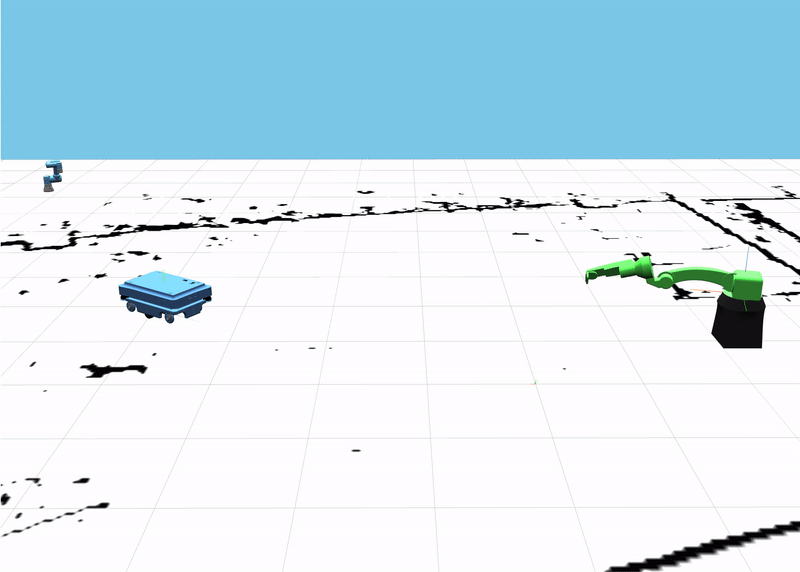Python 3 and Pipenv
-
Create a new folder, do
pip3 install pipenv->pipenv shell->pip3 install flaskthen clone this repo -
flask runand navigate to127.0.0.1:5000on your favorite browser -
To stop the server,
Ctrl-C -
To end the virtual environment, use
Ctrl-D
/: Home page, showcases the FANUC + draggable box IK solver/1: Testing page, testing different Onshape models and their mates/activity: Activity page, where you can mess with the given environment and make your own animation!/example: Holds a simple activity example of an animation loop
-
Navigate to
/your/path/to/testingjavascript/app/static/js/activity.jsin a shell or text editor to mess with the current environment -
Open a browser window (disable your cache if you haven't already), and go to
127.0.0.1:5000/activity -
Make a quick object in Onshape, right click on the part, hit Export, set the filetype to GLTF and resolution to Coarse, and save it to
testingjavascript/app/static/gltf/ -
If you don't want to make an object, take a look at
app/static/gltf/folder and use the three.js GLTF Loader to load something into your scene
// Create a new loader object
const loader = new GLTFLoader();
// call the load function within loader
// it takes in the file location within the server and 3 functions as parameters
// the only param that matters is the first one
// the other two print out loading percent to the console window or an error if one occurs
loader.load(
// resource URL, change YOUR_FILE_HERE
'./static/gltf/YOUR_FILE_HERE.gltf',
/*
gltf is the loaded gltf file, here you can restructure the assembly hierarchy or just immediately add an object to the scene
*/
function ( gltf ) {
console.log(gltf.scene);
scene.add(gltf.scene);
},
// called while loading is progressing
function ( xhr ) {
console.log( ( xhr.loaded / xhr.total * 100 ) + '% loaded' );
},
// called when loading has errors
function ( error ) {
console.log( error );
}
);
In order to animate something within a scene, you have to modify an object's rotation or position during the animation loop. Here's a sample animation and rendering function that you'll use:
// animate function
function animate(){
// requests an animation frame at around 60Hz
requestAnimationFrame(animate);
// update any controls object you have to have the ability to rotate the camera
controls.update();
// Here I'm updating an object's rotation attribute to change by .3 rads per frame
object.rotateY(.3)
// The object is also going to move along the x axis by 2 units per frame
object.translateX(2)
// rotateX, rotateY, rotateZ, translateX, translateY, translateZ are all available to use
// on an Object3D class
// translateOnAxis( your_specified_axis, distance ) exists as well
// If you want to query the object's current position, use this
curr_pos = new Vector3(0,0,0);
// update the curr_pos Vector with the object's current world position
object.getWorldPosition(curr_pos);
// call render
render();
};
// immediately call animate
animate();
// render function
// update the scene and camera to the browser window
function render() {
renderer.render( scene, camera );
}
- Navigate to
127.0.0.1:5000/exampleto view the example animation. To look at the file locatetestingjavascript/app/static/js/example.jsand try to modify the code to do something new!
